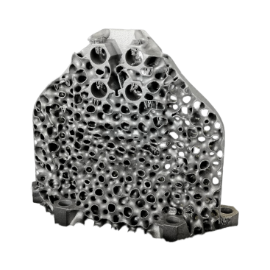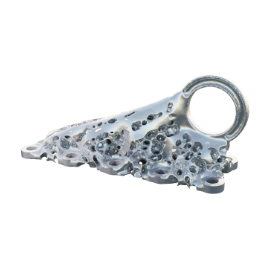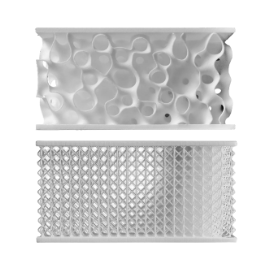FCRC Bracket
Reducing carbon footprint by 57%
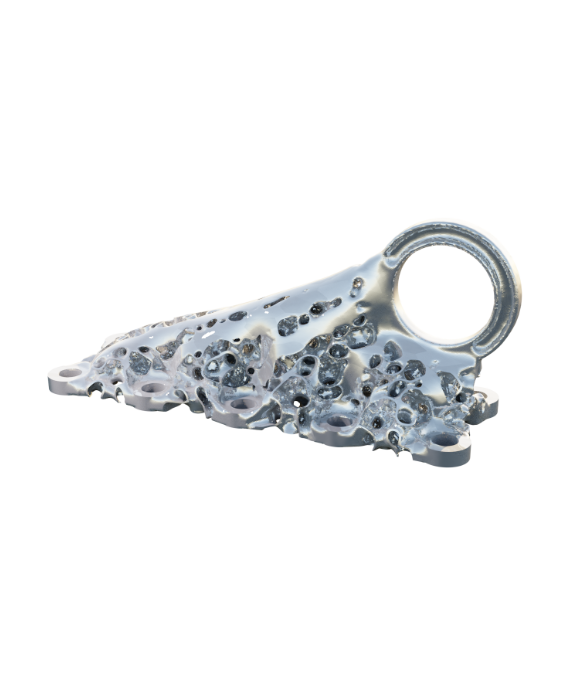
PROJECT
INDUSTRY
SYNOPSIS
ADVANTAGE/BENEFIT
FCRC Bracket Optimization
General Electric
Aerospace
Spherenes allow for the design of a part that is even lighter than GE’s optimized version. Moreover, our design further halves the manufacturing time, uses almost no support material.
It thus provides not only significant economic gains, but also a vastly reduced carbon footprint.
Reducing carbon footprint.
Efficient material use.
Reduced manufacturing time.
Room for improvement
Traditionally, the FCRC bracket is CNC milled from Aluminum. It connects the internal structure of an Airbus passenger plane to its body.
To showcase their new technologies, General Electric produced a lighter version of this part using Titanium printed using a Direct Metal Laser Melting process.
GE’s design was based on topology optimization, and of course was printable, but only with significant amount of build support.
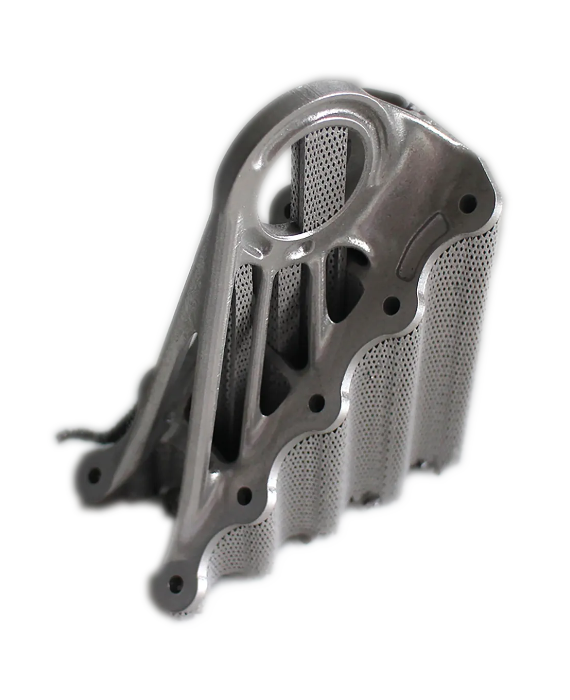
Reducing carbon footprint by 57%
Spherenes allow for the design of a part that is even lighter than GE’s optimized version. Moreover, our design further halves the manufacturing time, uses almost no support material. It thus provides not only significant economic gains, but also a vastly reduced carbon footprint.
These massive savings are achieved mostly by the complete freedom of part placement. Traditional SLM structures are very limited in the print direction, as the directional strength depends on the print direction and local stresses induced by printing.
The FCRC Bracket needed to be printed at an angle with a lot of support material for maximal strength. A spherene part on the other hand can be placed flat and uses thus only 10g support material while retaining excellent strength.

